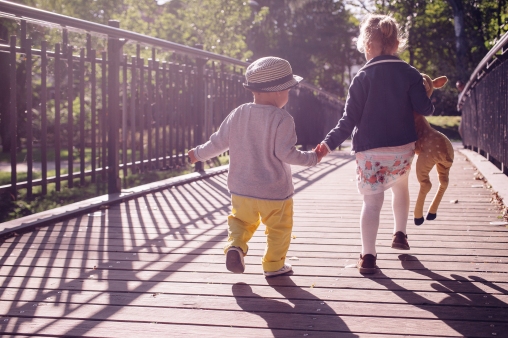The last blog post published focused on emotional intelligence in adults, and how it can be enhanced and utilized in the workplace. Just as emotional intelligence is important for adults, it is equally important for children. As childhood educators it is essential we understand how emotional intelligence can be taught and promoted in a child care environment.
Reminder: What is Emotional Intelligence?
Dictionary.com defines “Emotional Intelligence” as the following: “skill in perceiving, understanding, and managing emotions and feelings.”
Why is it Important for children to develop emotional intelligence?
Children that possess high levels of emotional intelligence are what we in the industry call “well adjusted.” They handle new situations with ease, are successful in crafting relationships, are able to regulate their feelings, and perceive accurately the feelings of others. According to the National Association for the Education of Young Children, children with high levels of emotional intelligence “are better able to pay attention, are more engaged in school, have more positive relationships, and are more empathetic.” In addition, research has found that highly emotionally intelligent children earn better grades, have better attention spans, and have more positive relationships. It should be the goal of every child care organization to ensure all children in their care continue to grow emotionally.
The RULER Approach
Developed by a group of researchers at Yale University Center for Emotional Intelligence and the Childcare Learning Centers, the Preschool RULER approach provides strategies to help educators foster environments that enhance emotional intelligence in children.
RULER is an acronym, emotionally intelligent individuals should be able to do each of the following:
Recognize emotions
Understanding causes and outcomes of emotions
label emotions
Express emotions appropriately
Regulate emotions
In order to effectively teach emotional intelligence to children, teachers must first understand RULER (base components of emotional intelligence). Teachers should structure activities and curriculum around helping children Recognize, Understand, Label, Express, and Regulate emotions.
Activities that help children build emotional intelligence:
- Feelings Flash Cards
- Use photos to discuss with children the emotions being conveyed
- Watch videos and help children depict how characters are feeling
- Explain to the children how you feel throughout the day
- Play emotional charades
- Role play and review
- Use positive reinforcement to discuss emotions when a child hurts another child’s feelings, or does something nice to another child
- Keep a feelings journal
Tracking Mood:

One of the most important exercises teachers can do with children of any age is to track their mood, utilizing their input. This is not just your perception of their mood, you need to make sure you listen to how they feel, and let them plot it on a Mood Meter or a variation there of. Keeping track of their mood and emotional well-being with helps them see their personal growth. Teachers can utilize this exercise on themselves too, to help them become more aware of their own emotional state.
Questions to Reflect On
- What additional activities can be utilized to foster emotional growth in children?
- What activities
- How will you incorporate emotional intelligence training into your curriculum?
- What areas of RULER do you struggle with?
- How are you planning on implementing RULER training in the classroom?
This was very interesting will need to look more into this have to do a lesson on feelings emotions
LikeLike
I love this topic! Three of DDays teachers and I took the PYRAMID Model Training and it truly spoke to this topic at an in depth level. The importance of “EI” cannot be overstated.
LikeLike
Often times I feel as though there are certain emotions that have a positive and negative connotation. For example, happy correlated with positive and sad being correlated with negative. In my opinion, all emotions are valid and shouldn’t be seen as “good” or “bad.” How can we break that stereotype that says some emotions are good and some are bad? We should be focusing on our emotions as a whole and that they are a part of us, creating who we are as a person. How can we convey this idea to children and to teach them to accept and manage all emotions without looking at them as good or bad? I would love to start a conversation around this!
LikeLike